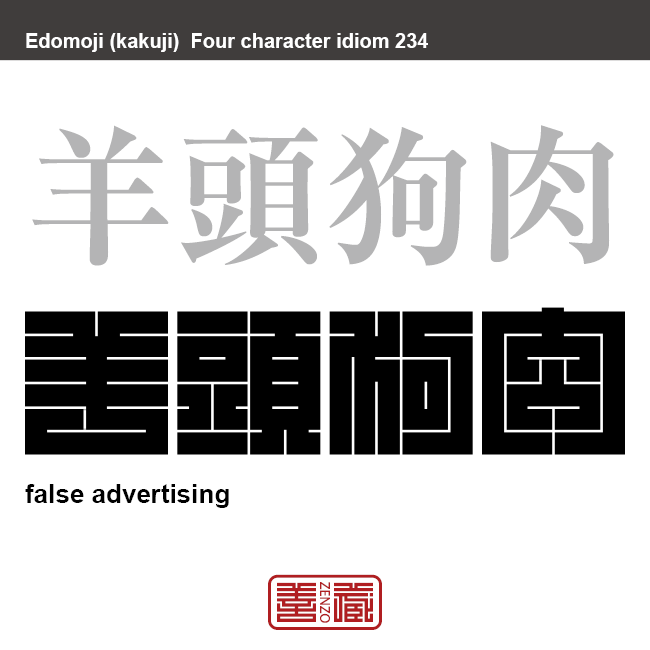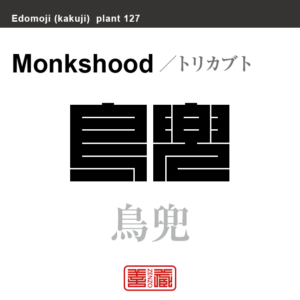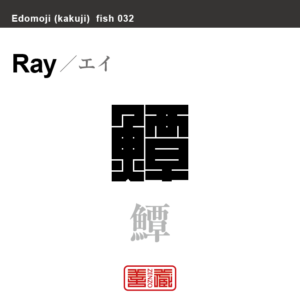羊頭狗肉 ようとうくにく 角字でことわざ、四字熟語

羊頭狗肉
ようとうくにく
Youtou-Kuniku
False advertising
Unicode: [羊_0x7F8A][頭_0x982D][狗_0x72D7][肉_0x8089]
「羊頭を掲げて狗肉を売る」の略。羊の頭を看板に掲げ、犬の肉を売るという意味。
立派なものを看板に使い、実際は粗悪なものを売ることのたとえ。
見かけと実質が伴わない、見掛け倒しのこと。
出典は中国宋時代の禅書「無門関(むもんかん)」。
故事における釈迦を、「羊の頭を看板に飾っておきながら、実際に売っているのは犬の肉だ」と批判した故事「羊頭を懸げて狗肉を売る」の略。
角字とは?
江戸時代に誕生した角字は、正方形のグリッド内にほぼ水平・垂直のラインのみで文字(漢字)が表現されるグラフィックアートです。
正方形という限られた空間の中に、あらゆる文字を閉じ込めようとするグラフィックデザインは、前述した、ミニマムな物に対する日本人特有のこだわりが随所に感じられます。
そのシンプルで有りながら、奥深い「角字」は多くの日本人を魅了し、お祭りで着る半被や印半纏(しるしばんてん)と言われる着物や、商標、印鑑、家紋、看板デザインなどに今日まで数多く使用されてきました。
What is Kakuji?
There is a style of penmanship called “Kakuji” in Japan. Edo-born Kakuji is a graphicart that expresses letters (kanji) with almost horizontal and vertical lines only.
The design which bases on many straight lines seems simple, or too plain even at its first glance; yet this beautiful artistic penmanship that encompasses the aesthetic of the Japanese in the Edo era, also known as “Iki”, and playfulness has long been inherited to this day, thanks to the masteries’ long years of efforts in training and refinement.
Kakuji with its simplicity and depth is used for designs such as trademark, hanko stamp, family crest and signboard.































































 2文字コード:MZ 3文字コード:MOZ 数字:508 ITU:258 ccTLD:.mz
2文字コード:MZ 3文字コード:MOZ 数字:508 ITU:258 ccTLD:.mz







































































































































